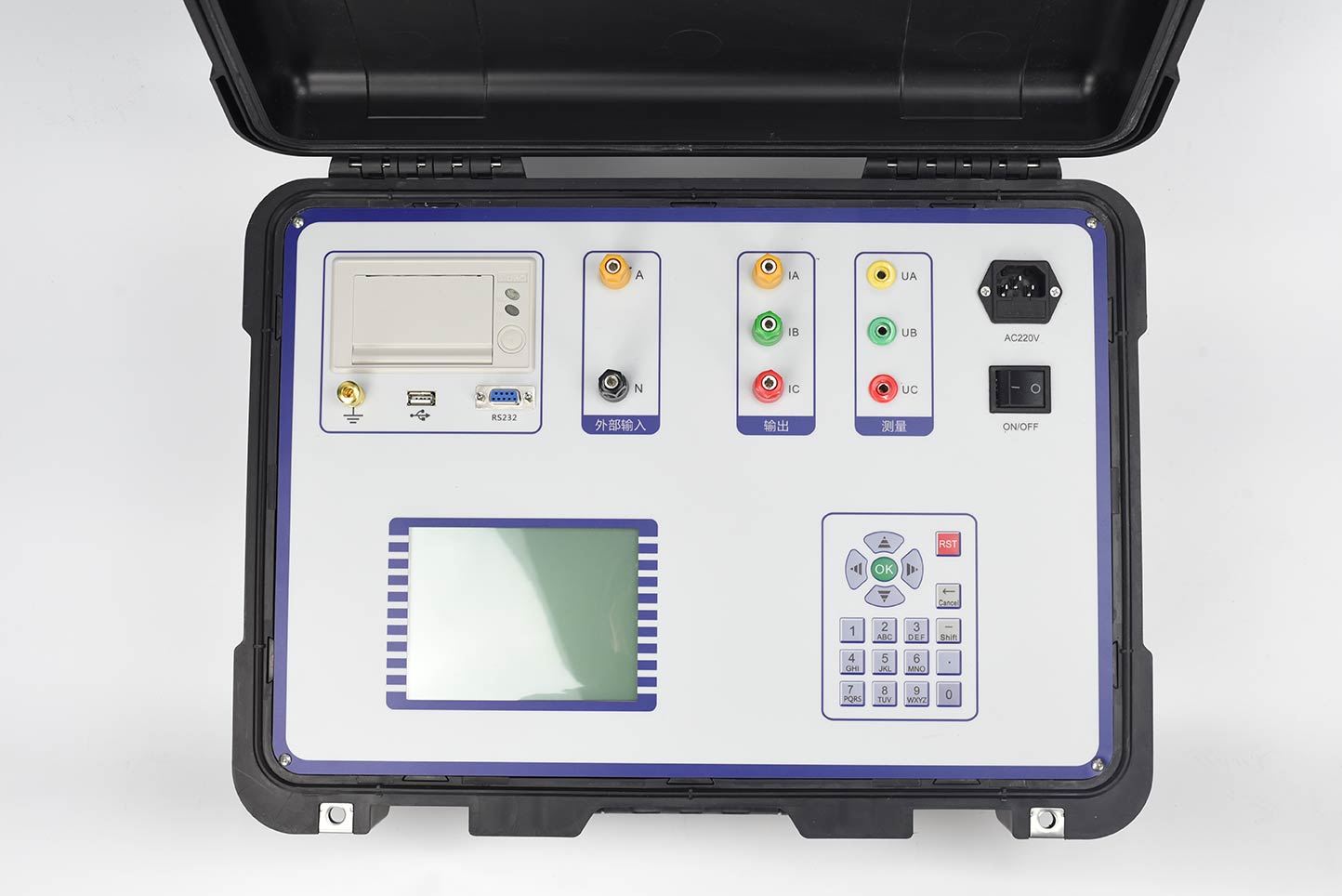Transformer short-circuit impedance tester is an instrument used to test the short-circuit impedance of transformers. Its function is to evaluate the electrical performance of the transformer, to detect whether the parameters of the transformer meet the design requirements, and to provide data for judging the load capacity, stability, and operating status of the transformer. The testing principle mainly includes the following aspects:
1. Test wiring: The transformer short-circuit impedance tester first needs to be correctly connected to the transformer's test circuit, usually connecting the tester to the high-voltage and low-voltage sides of the transformer. Ensure the safe grounding of the test circuit to prevent electrical accidents from occurring.
2. Signal injection: The tester injects a specific test signal into the transformer. This is usually a sine wave current or voltage signal. The frequency of a signal is usually a specific value, such as 50 Hz or 60 Hz, to make the test results comparable.
3. Signal reception: The tester simultaneously measures the current and voltage signals on the transformer circuit. Current transformers (CT) and voltage transformers (VT) are usually used to collect high current and high voltage signals and convert them into corresponding measurement values.
4. Calculate short-circuit impedance: The tester calculates the short-circuit impedance of the transformer based on the measured current and voltage signals. Short circuit impedance is usually expressed in complex form, including reference voltage and reference current, and can be used to evaluate the electrical characteristics of transformers.
5. Result display and analysis: The tester displays the calculated short-circuit impedance results on the instrument screen or outputs them to external devices. These results can be used to evaluate the performance of transformers and for further data analysis and decision-making.
In summary, the transformer short-circuit impedance tester measures the short-circuit impedance of the transformer through steps such as signal injection, signal reception, short-circuit impedance calculation, and result display to evaluate the electrical performance of the transformer. It can help detect and prevent transformer faults, and provide data support for maintenance and operation decisions. At the same time, it is also a quality and safety guarantee for the manufacturing and operation of transformers.

Low voltage short-circuit impedance test is the most direct method to identify whether a transformer is affected by short-circuit current during operation or mechanical force during transportation and installation, and to check whether its winding is deformed. It is of great significance for determining whether the transformer can be put into operation and is also one of the basis for determining whether disassembly inspection is required for the transformer. ZC-204B Transformer Short Circuit Impedance Tester is a specialized instrument for measuring low voltage short circuit impedance of transformers under on-site and laboratory conditions. The instrument comes with an adjustable power output, which is particularly suitable for on-site testing of 110kV and above main transformers.
Kvtester Electronics Technology Co.,Ltd. is a high-tech enterprise specializing in power testing, testing, research and development, production, and sales of testing equipment. It has been engaged in the electrical testing industry for many years, and its products are of high quality. We welcome customers to come and purchase.





